#Carolina of Bourbon-Parma
Text


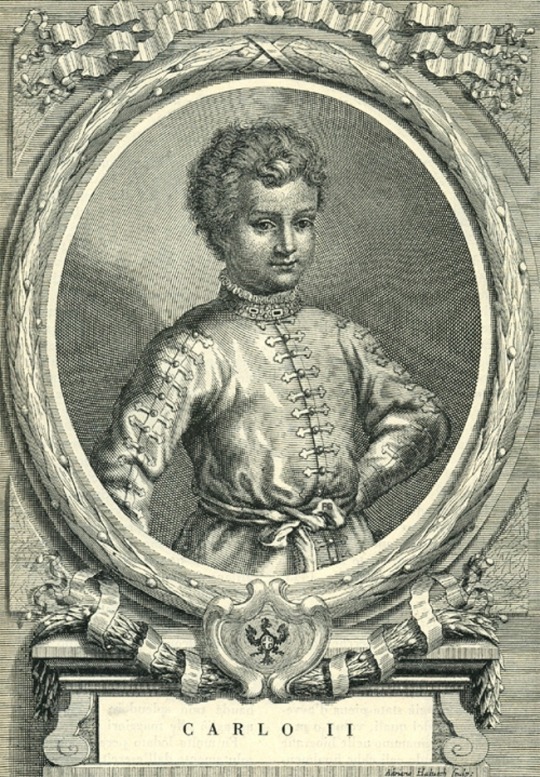
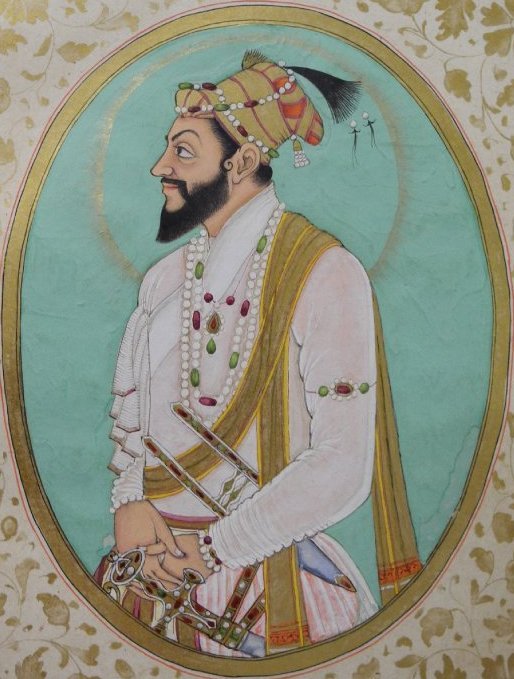

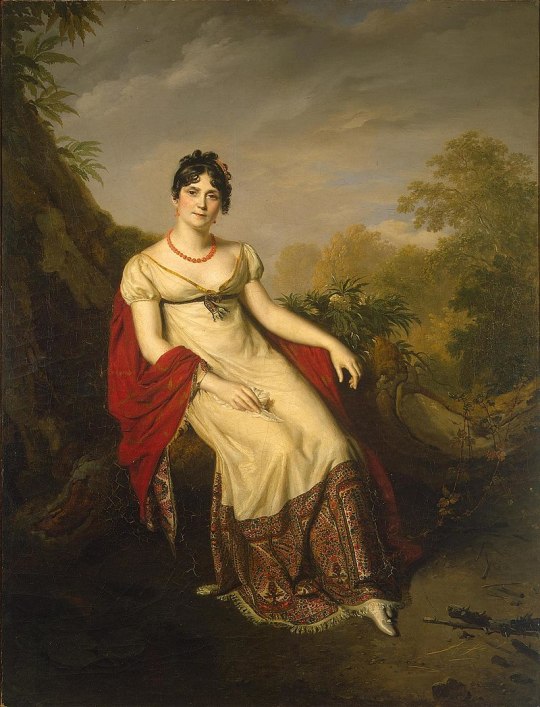
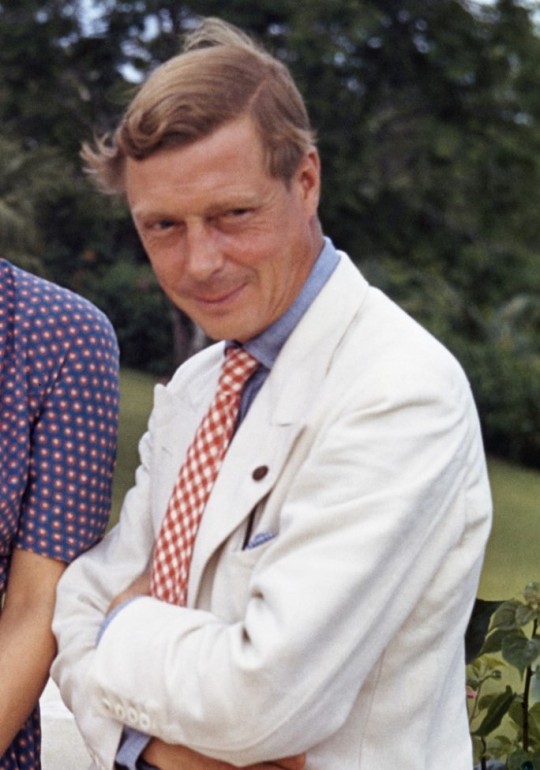



Royal Birthdays for today, June 23rd:
Ptolemy XV Philopator Philometor Caesar, Pharaoh of Egypt, 47 B.C.
Margaret of Denmark, Queen of Scotland, 1456
Charles II, Duke of Savoy, 1489
Shah Shuja, Mughal Prince, 1616
Marie Leszczyńska, Queen of France, 1703
Joséphine de Beauharnais, Empress of the French, 1763
Edward VIII, King of the United Kingdom, 1894
Tribhuhvan Bir Bikram Shah, King of Nepal, 1906
Maria Carolina of Bourbon-Parma, Marchioness of Sala, 1974
Maria-Carolina of Bourbon-Two Sicilies, Duchess of Palermo, 2003
#caesarion#marie leszczynska#josephine de beauharnais#margaret of denmark#Maria-Carolina of Bourbon-Two Sicilies#Maria Carolina of Bourbon-Parma#edward viii#shah shuja#charles ii#Tribhuhvan Bir Bikram Shah#royal birthdays#long live the queue
15 notes
·
View notes
Photo



Regal Weddings Part 3
Princess Maria Carolina de Bourbon de Parma
7 notes
·
View notes
Text
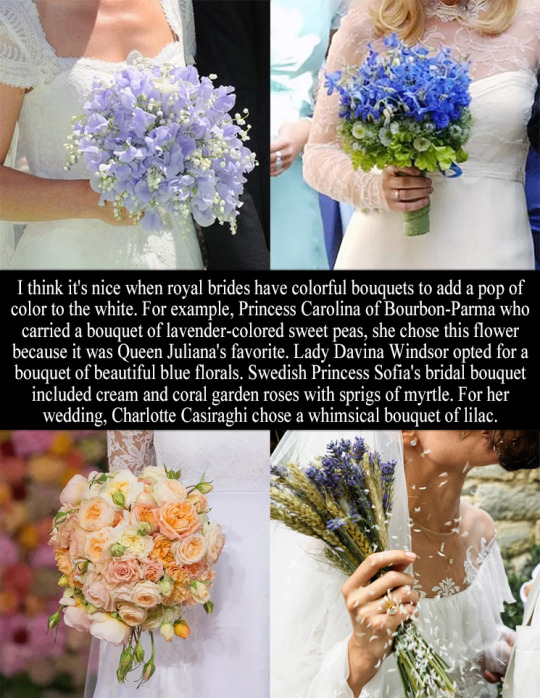
“I think it's nice when royal brides have colorful bouquets to add a pop of color to the white. For example, Princess Carolina of Bourbon-Parma who carried a bouquet of lavender-colored sweet peas, she chose this flower because it was Queen Juliana's favorite. Lady Davina Windsor opted for a bouquet of beautiful blue florals. Swedish Princess Sofia's bridal bouquet included cream and coral garden roses with sprigs of myrtle. For her wedding, Charlotte Casiraghi chose a whimsical bouquet of lilac.” - Submitted by Anonymous
#Wedding#sofia hellqvist#princess sofia#Charlotte Casiraghi#Lady Davina Windsor#house of bourbon parma
31 notes
·
View notes
Note
What the tea on Maria Carolina? You said in one of your posts: “Maria Carolina truthers know she's the most interesting daughter and the one there should be hundreds of books and movies about, but the general audiences haven't seen the light yet.” I’m intrigued
Hi! Sorry it took me so long; I was reading a book about the Bourbons in Naples and I wanted to finish it to be able to give a more complete answer… but it ended up taking me MONTHS to be done with it.
This answer was a bit difficult to put together because Maria Carolina’s life was very eventful, so I’ll just mention some facts about her life, focusing more on the Napoleonic era and Napoleon specifically because I think you’ll be more interested in that. Also please feel free to correct me If I got something wrong, since this is a time period I’ve only started to learn about recently. So what was the tea?
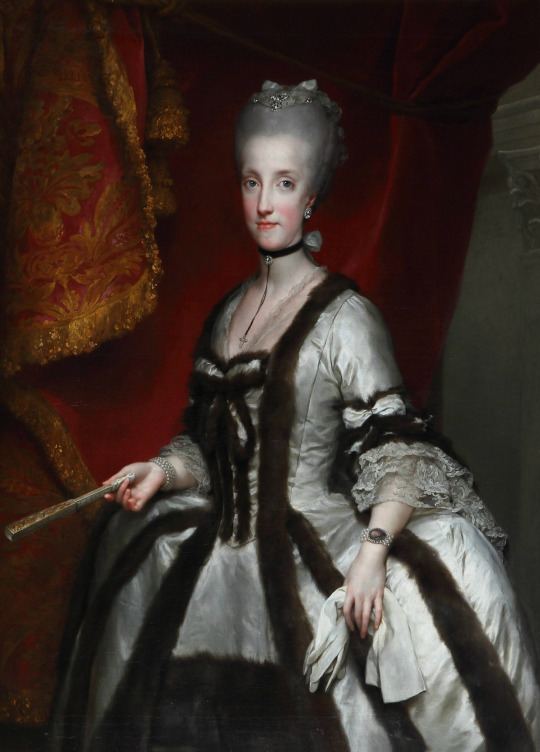
Born in 1752 Maria Carolina was the thirteenth child of Empress Maria Theresia and Franz I, Holy Roman Emperor. As part of her mother’s policies of rapprochement to the Bourbons, she and her siblings were engaged to different members of the houses of Spain, France, Parma and Naples. Maria Carolina was promised to the Dauphin of France, but when her elder sister, promised to the King of Naples, died of smallpox, she took her place.
Ferdinando of Naples had been a child king, and he remained so for the rest of his life. His only diversions were hunting and pulling pranks on his courtiers, and he had a terrible reputation across the courts of Europe as an uneducated, bad mannered, spoiled man, kept in ignorance by his Ministers so they could control him. Everyone pitied the young Archduchess’ fate, her mother Maria Theresia wrote around the time of Maria Carolina’s wedding that she “trembled in fear for her”. But duty came first, and so she went to Naples, aged only sixteen.
Maria Carolina did not had it easy at first. She was terribly homesick and found herself in a court that could not have been more different to the one she grew up in. When her sister Maria Antonia married the Dauphin of France, she wrote to her former aya:
When I imagine that her fate will perhaps be the same as mine, I want to write volumes to her on the subject, and I very much hope that she has someone like me [to advise her] at the beginning. If not, to be frank, she may succumb to despair. One suffers real martyrdom, which is all the greater because one must pretend outwardly to be happy. I know what it is like, and I pity those who have yet to face it… I would rather die than endure again what I went through at the beginning. Now all is well, which is why I can say—and this is no exaggeration—that if my faith had not told me, ‘Set your mind on God,’ I would have killed myself.
Unsurprisingly Maria Carolina didn’t fall head over heels for her husband, but she did convince him that she had, and eventually won his affection. After she bore a son in 1775 she earned a seat in the State Council (as her marriage contract established), and from that point onward she became an active player in Neapolitan politics. One of her firsts moves was to remove the Secretary of State, Marchese Tanucci, who had been Regent during her husband’s minority and still held a huge influence over him.
After Tanucci’s dismissal she became the person with the most influence over Ferdinando, and she pretty much had him wrapped around her finger for most of their marriage, acting as the de facto ruler of Naples. Every decision the king took was only after consulting his wife, and she often had the final say. However, this didn’t meant Maria Carolina held absolute power: Ferdinando was still a very unpredictable person, and as soon as his wife was out of his favor he stopped listening to her.
Maria Carolina was enthusiastic about the ideas of the Enlightenment, as many other royals were at first, and even protected and encouraged the Masons in Naples during her early years as queen. But she was still the consort of an absolute monarch that believed they were chosen by God to rule, so it shouldn’t come as a surprise that she was horrified by the French Revolution and fervently opposed it. If it were for her, she would've declared war on France immediately, but this was not possible. On the execution of her brother-in-law Louis XVI she wrote:
Knowing your upright mind, I can imagine your emotion on hearing of the appalling crime perpetrated against the unfortunate King of France in all solemnity, tranquillity and illegality (…) He was the head of our family, our kinsman, cousin and brother-in-law. What an atrocious example! What an execrable nation! I know nothing about the other wretched victims in the Temple. If sorrow does not kill them, other horrors may be expected from this horde of assassins. I hope that the ashes of this good Prince, of this too good Prince who has suffered shame and infamy for four years culminating in execution, will implore a striking and visible vengeance from divine Justice, and that on this account the Powers of Europe will have no more than a single united will, since it is a matter in which they are all involved.
She was growing increasingly anxious about her sister, Queen Marie Antoinette, and her hatred for France became an obsession:
I hear horrible details from that infernal Paris. At every moment, at every noise and cry, every time they enter her room, my unfortunate sister kneels, prays and prepares for death. The inhuman brutes that surround her amuse themselves in this manner: day and night they bellow on purpose to terrorize her and make her fear death a thousand times. Death is what one may wish for the poor soul, and it is what I pray God to send her that she may cease to suffer. . . . I should like this infamous nation to be cut to pieces, annihilated, dishonoured, reduced to nothing for at least fifty years. I hope that divine chastisement will fall visibly on France, destroyed by the glorious arms of Austria.
At this point she had lost all hopes of her being rescued, and wished her “a natural death as the best thing that could happen to her”. But even though she had been waiting for it, the news of Marie Antoinette’s execution still shocked her. She wept and prayed with her children for “her wretched sister”.
Naples fell into a social crisis during these years, paranoia, fear and suspicion of the revolution in every corner. There was an active persecution of everyone thought to be a “jacobin”, arrests, trials and executions. But the country couldn’t wage war against France, and eventually they had to sign a peace treaty, which the Queen disapproved: “I am not and never shall be on good terms with the French… I shall always regard them as the murderers of my sister and the royal family”.
It was also during this time that the star of a certain Bonaparte started to rise, and Maria Carolina followed his career with interest and admiration. Before the treaty of Campo Fornio in October 17, 1797, she wrote about Napoleon:
I admire him, and my sole regret is that he serves so detestable cause. I should like the fall of the Republic, but the preservation of Bonaparte. For he is really a great man; and when one can only see ministries and sovereigns with petty and narrow views, one is all the more pleased and astonished to watch such a man rise and increase in power, while deploring that his grandeur is attached to so infernal a cause. This may seem strange to you. But while I loathe his operations, I admire the man. I hope that his plans will miscarry and his enterprises fail; at the same time I wish for his personal happiness and glory so long as it is not at our expense… If he dies they should reduce him to powder and give a dose of it to each ruling sovereign, and two to each of their ministers, then things would go better.
Soon she would have less nicer things to say about Naps, but she never lost that original admiration and astonishment.
In 1798 Ferdinando, encouraged by his wife and the British, led a expedition in December to try to expel the French from Rome. Not only the Neapolitan troops weren’t prepared to defeat the French Army, they were also technically still at peace with France, so this wasn’t a good move at all, and only two days after entering Rome Ferdinando had to retreat. Expectedly, Napoleon’s reaction to such a break of peace was marching over Naples. The royal family had to flee to Sicily, a tragic journey in which Maria Carolina’s six-years-old son Alberto died after a series of convulsions.
This ask is already too long to unpack all the political mess around the short-lived Parthenopean Republic, so to summ it up: it didn’t work out, and by 1799 the Bourbons were back in power. They were unforgiving of the republicans: during the following months there were thousands of arrest and hundreds of executions and deportations. Maria Carolina felt no mercy for them: “Death for the ringleaders, deportation for the rest... Our country must be purged of this infection”.
The Queen returned to Naples in August 1802, after more than three years of absence. She had never been a liked queen, but her unpopularity reached a new low since she was blamed for all the misfortunes of the last years. Having lost the influence she had on her husband, who held her responsible for the Rome expedition fiasco, she meddled a little less in politics now, dedicating mainly to her children and grandchildren, particularly to her unmarried daughters.
Speaking of her children, she had seventeen (!!!) but she would outlive fourteen of them. Part of her masterplan for them was to marry them all to her Habsburg nephews and nieces, and in many cases she succeeded. Just to name one exemple her eldest daughter Maria Theresa married Emperor Franz II/I of Austria. Maria Carolina’s relationship with this son-in-law ended up being a bit tense, since Franz found her mostly meddlesome and never aligned with her plans. On top of that, she was quite hurt when Franz remarried only months after her daughter’s death; after he announced his engagement she stopped adressing him as her son and resorted only to “Your Majesty” instead.
In 1804 Napoleon became Emperor, and we have a letter she wrote to Minister Gallo on this. Buckle up because whatever you imagine her reaction was, you aren’t ready for it:
It was not worth the trouble to condemn and slaughter the best of kings [Louis XVI], dishonour and revile a woman, a daughter of Maria Theresa, a holy princess [Marie Antoinette], to wallow in massacres, shootings, drownings, and kill six hundred prelates in a church, perpetrating horrors of the most barbarous ages at home and abroad, writing whole libraries on liberty, happiness, etc., and at the end of fourteen years become the abject slaves of a little Corsican whom an incredible fortune enabled to exploit all means to succeed, marrying without honour or decency the cast-off strumpet of whom the murderer Barras was surfeited, Turkish or Mohammedan in Egypt, atheist at the start, dragging the Pope after him and letting him die in prison, a devout Catholic after that, practising every deceit, shortening the lives and normal careers of sovereigns who might assert themselves, only allowing the dummies to vegetate, then atrociously, without a shadow of justice, assassinating the Duc d'Enghien, plotting himself (and he did not blush to admit it, so blinded is he by passion) a conspiracy to victimize the rulers he still feared, and on top of all these abominations he is acclaimed as Emperor: he and his race of Corsican bastards are to dominate almost half Europe, yet every thinking person is not revolted. Far from it, their egoism and weakness are such that they study how low they can prostrate themselves before the new idol… Send me word of the august Emperor’s intentions regarding Italy: whether he will deign to accept us as his slaves or will leave us in our obscurity… Tell me what the other Powers are saying. I imagine a Gloria in Excelsis Demonio will be the general refrain…
She took it pretty well right?
The future of the Bourbons of Naples once again seemed bleak, and this time Maria Carolina resorted to directly appealing to Napoleon. This was the beginning of a very passive-agressive epistolary relationship, both of them trying to be civil but still borderline insulting each other. I honestly find this funny, because you have Maria Carolina swearing to Napoleon that she had nothing against him or France and then she would write this to one of her ministers: “You will never imagine the rage and despair which the extremely insolent screed of the scoundrelly but too lucky Corsican has caused me.”
Despite the passive-agressiveness, when Napoleon was looking for a princess bride for his stepson Eugène he actually considered one of Maria Carolina’s daughters, Maria Amelia, as a possible candidate. But when the Minister of Foreign Affairs Gallo told Maria Carolina of Napoleon’s inquiries about her daughter she was so utterly horrified at the idea of marrying into the Corsican’s family that the project was immediately dropped (eventually Maria Amelia would go on to marry the Duke of Orléans, later King Louis Philippe I, and became the last queen of the French).
After Austerlitz Napoleon pretty much had all of Europe eating from his hand, and the Neapolitan sovereigns felt abandoned by every other power. Maria Carolina tried one last futil attempt to plead to Napoleon, but he had already decided to take Naples. The King was the first to Sicily flee this time, the Queen stayed behind and tried to organize a resistance, but eventually she realized there was nothing they could and also fled with her daughters. Before sailing she wrote to her daughter Empress Maria Theresa of Austria: “I fear we shall never see Naples again”. She was right.
The royal couple spent their second exile the same way they spent their first: Ferdinando living his best life enjoying the freedom he had in Sicily and Maria Carolina being utterly miserable. Her health worsened and she often was in pain, but recovering Naples from the Bonapartes became her obsession. She was the leading force behind every attempt to get the kingdom back, but soon she started to crash with their only allies left, the British. They wanted to keep the Bourbons in Sicily, getting back Naples was not a priority for them.
So remember Maria Carolina’s her reaction when Napoleon suggested to marry her daughter to Eugène? Well she didn’t took her granddaughter’s marriage to Napoleon himself any better: “Only this calamity was held in reserve. To become the Devil’s grandmother”.
But at the end, the final boss in Maria Carolina’s life wasn’t Napoleon, but the British. The Queen was too meddlesome and hindered their plans, and made a personal enemy of the British representative Lord Bentinck. Maria Carolina was accused of conspiring and being a threat to Sicily, and eventually the King was forced by the British to send her away. Exiled in exile, having nowhere else to go, she returned to Vienna in an eight-months-journey. While her son-in-law had no desire to receive her, he couldn’t turned her away either. She got in a better mood once she was once back at her childhood home, spending time with her Austrian grandchildren. It was there that she heard of the French defeats and Napoleon’s abdication.
Even though Maria Carolina made her hatred of Napoleon her personality for fifteen years she felt sympathetic towards him after he was defeated, reproached Marie Louise for not going to Elba with her husband, and told her that if she wasn’t allowed to reunite with him she should tie her bed-sheets to her window and escape, because marriage was for life. She also showed a lot of interest in her great-grandson, little Napoleon II, whom she called “mon petit monsieur”; in a letter to Marie Louise she described him as “very charming, quiet and well behaved” and told her that “may God give you in him every consolation a mother can receive.”
Maria Carolina was not to see the Bourbons restored in Naples. She died of a stroke in September 8, 1814, aged sixty-two-years old. At the time of her death Murat was still King of Naples, and the allies were happy to leave Ferdinando in Sicily. She was buried in the Capuchin Crypt, her death being only a small incident in the Congress of Vienna’s dance.
Overall, I personally find Maria Carolina the most fascinating because of everything she represented: she was a healthy daughter of the ancien régime that saw how the world as she knew it crumbled down and changed forever, to the point that by the time of her death she, the last surviving child of Maria Theresia, was a living relique (and she wasn’t even that old - a testament of how fast everything had changed). And she didn't got there sitting by idly: she fought against this new world every step of the way, made it out alive, but lost the battle still. And I don't know about you, but to me this is just a more interesting story to tell than Unoriginal Marie Antoinette Adaptation Number 7383.
Sources:
Acton, Harold (1998). The Bourbons of Naples (1734-1825)
Castelot, André (1974). King of Rome; a biography of Napoleon's tragic son
Stollberg-Rilinger, Barbara (2020). Maria Theresa: The Habsburg Empress in her Time
#sorry if this answer is too long and messy - i been putting it together little by little for the past month#but this is only the top of the iceberg i left out so many things#queen maria carolina of naples#ferdinando i of the two sicilies#house of habsburg#house of bourbon-two sicilies#napoleon i#cw suicide mention#asks
53 notes
·
View notes
Text

✵ June 16, 2012 ✵
Princess Maria Carolina of Bourbon-Parma, Marchioness of Sala & Albert Brenninkmeijer
4 notes
·
View notes
Photo

Laurel Wreath Tiara ♕ Dutch Royal Jewel Foundation
#queen beatrix#princess beatrix#Princess Laurentien#princess margriet#Princess Carolina of Bourbon-Parma#laurel wreath tiara#Diamond Tiara#tiara#Wedding Jewelry#wedding tiara#royal wedding tiara#Royal Wedding#Dutch royal family#Dutch Royals#dutch royalty#dutch royal jewel foundation#dutch royal jewels#netherlands#netherlands royals#Netherlands Royal Family#netherlands royal jewels#Diamond Jewelry#diamond jewels#House of Orange#house of oranje#House of Oranje-Nassau#royal jewels
25 notes
·
View notes
Photo
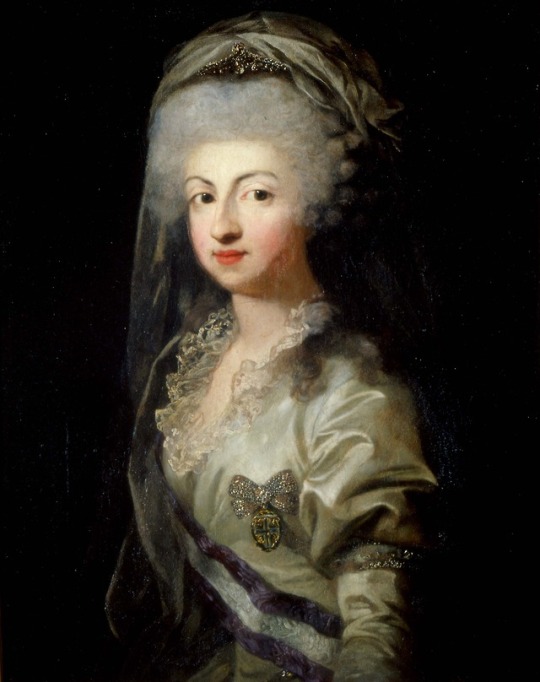
Anton Graff - Princess Carolina of Parma
5 notes
·
View notes
Photo

Royal Wedding Bouquets:
Princess Carolina of Bourbon-Parma (2012)
#princess carolina of bourbon-parma#house of bourbon-parma#dutch royal family#royaltyedit#royal wedding#royal wedding bouquets#mine
16 notes
·
View notes
Text
MAXIMILIAN & MARIA LUISA CARLOTTA
The Royal Wedding of the Hereditary Prince of Saxony and a Princess of Bourbon-Parma
(married 1825)


pictured above are portraits of the Prince and Princess of Saxony, his portrait is by Anton Graff from c. 1792, and her portrait is by Carl Christian Vogel von Vogelstein from 1834
-------------------- ~ -------------------- ~ --------------------
SERIES - On this day November Edition: Maximilian and Maria Luisa Carlotta were married on 7 November 1825.
-------------------- ~ -------------------- ~ --------------------
MAXIMILIAN MARIA JOSEPH ANTON JOHANN BAPTIST JOHANN EVANGELISTA IGNAZ AUGUSTIN XAVER ALOYS JOHANN NEPOMUK JANUAR HERMENIGILD AGNELLUS PASCHALLIS was the youngest surviving son of Friedrich Christian, Elector of Saxony and Princess Maria Antonia of Bavaria. He was a member of the HOUSE OF WETTIN and was a Royal PRINCE OF SAXONY from the creation of the Kingdom of Saxony in 1806.
MARIA LUISA CARLOTTA was the only daughter of Ludovico I, King of Etruria and Infanta María Luisa of Spain. She was a member of the HOUSE OF BOURBON-PARMA and from her birth in 1802 she was a PRINCESS OF BOURBON-PARMA.
-------------------- ~ -------------------- ~ --------------------
A brief History... regarding the KINGDOM OF SAXONY and the HOUSE OF BOURBON-PARMA, during the Napoleonic Era...
Before the Princess was born, in 1801, her grandfather Ferdinando I, Duke of Parma agreed to cede the Duchy of Parma and Piacenza to France governed by Napoleón Bonaparte, First Consul of France. In exchange her father the former Hereditary Prince of Parma received the Grand Duchy of Tuscany that was renamed as Kingdom of Etruria.
So, when she was born in 1802 the House of Bourbon-Parma had already changed their titles to Princes and Princesses of Bourbon-Parma, instead of the customary Prince or Princess of Parma. And so, she was from birth a PRINCESS OF BOURBON-PARMA and a PRINCESS OF ETRURIA.
And to complicate the status of the Princess' family, her grandfather died days after she was born and her father also died in 1803, leaving the matters of succession to her mother who acted as Regent of Etruria to her infant brother who was now Ludovico II, King of Etruria.
Meanwhile the Holy Roman Empire was dissolved in 1806 with the support of Napoléon I, already as Emperor of the French. And following the dissolution the Electorate of Saxony was raised to Kingdom of Saxony with the Prince's elder brother Friedrich August III, the former Elector of Saxony becoming Friedrich August I, the new King of Saxony.
But even though the Prince was the youngest brother, none of his older brothers had surviving sons and he became the second-in-line to the Saxon throne.
After Napoléon I's fall in 1814, the Princess' mother plead to the Congress of Vienna of 1814-15 for the restoration of the Duchy of Parma to the Princess' brother. But instead her mother was offered to become the Duchess of Luca herself, and so the Princess, her mother and her brother moved to their new Duchy.
-------------------- ~ -------------------- ~ --------------------
And... the History of their Royal Wedding...
When the Princess was fourteen years old, her Spanish relatives wished to marry her to her maternal uncle Infante Francisco de Paula but the plan did not go forward.
Some years later it was arranged for her to marry the Prince of Saxony, who was the widower of her aunt Princess Carolina of Parma. They had an age gap of 43 years, as he was 66 years old and she was 25 years old.
They married first by proxy in Lucca, on 15 October 1825. And on 7 November 1825 they married in person, in Dresden.


pictured above are portraits of the Prince of Saxony and the Princess of Bourbon-Parma, his portrait is by Vicente López Portaña and her portrait is by Pietro Nocchi, both from 1825 (the year they got married)
Following their wedding she became the PRINCESS MAXIMILIAN OF SAXONY and the stepmother to her new husband's seven children, who were also her first cousins and about her age. And they did not have any more children.
In 1827 the Prince's brother died and was succeeded by the next brother as Anton, King of Saxony, and the couple became the HEREDITARY PRINCE AND PRINCESS OF SAXONY.
Around 1830 the people of Saxony started to revolt against the Monarchy and the Royal Family was forced to give in to their pleas. The Hereditary Prince agreed to abdicate his rights of succession to the throne to his eldest son Prince Friedrich August, who was named as Prince co-Regent jointly with King Anton. And the couple returned to their former titles of Prince and Princess of Saxony.
By 1836 King Anton died and if the Prince did not have abdicated, they could have become the new King and Queen of Saxony. But instead the Prince's son succeeded as King Friedrich August II.
At the early days of 1838 the Prince of Saxony died, aged 78, leaving the Princess widow at only 35 years old.
-------------------- ~ -------------------- ~ --------------------
The Princess ended up remarrying twice more, to Count Francesco Rossi and to Count Giovanni Vimercati.
Eventually she moved to Vienna and lived there for most of her life, but died in Rome, 19 years after the Prince of Saxony, in 1857.
#maximilian of saxony#maria luisa carlotta#prince of saxony#princess of parma#kingdom of saxony#duchy of parma#wettin#house of wettin#bourbon parma#house of bourbon parma#german royalty#italian royalty#royal wedding#royal history#german history#italian history#european history#world history#history#history lover#napoleonic era#napoleon i#etruria#frederick august i#king anthony#holy roman empire#19th century#history with laura
2 notes
·
View notes
Note
It's me again 😁😁 Top 5 wedding bouquets and why?
1- Crown Princess Victoria
I love the simple summery design but it's still grand enough for a royal wedding. Plus I love that it was all flowers, I'm not a fan of a lot of greens in bouquets.
2- Princess Carolina of Bourbon Parma
I love Sweet peas and the color is to die for
3- Princess Sofia
It's unique in design plus the colors were really nice
4- Meghan
I wish it were a little bigger but I love that Harry handpicked the forget-me-nots himself.
5- Princess Clotilde
I've always liked this one. I'm not normally a huge fan of roses in bouquets but hers looked so lush and pretty. Plus she was pregnant and that bouquet was perfect to camouflage her bump without being super obvious.
5 notes
·
View notes
Text
Morgan’s Top 10 Favorite Royal(ish) Wedding Gowns
Once again, @claireofluxembourg, @queensonjas, and @wonderfullyroyal (and everyone else who’s doing this now) have both inspired me and reminded me that I have opinions about royal/noble wedding gowns.
This round was more fun, because who doesn’t love a fabulous gown? As with last time, this is called “favorite” and not “best” because these are 100% my own opinions and also my own bias. Again, these are all from the 2000′s, although doing a top 10 favorite gowns from before the 2000′s would be...an interesting challenge.
Bonus Round: Queen Jetsun Pema of Bhutan
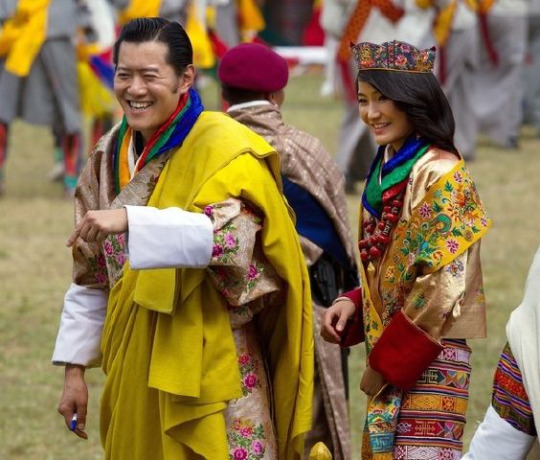
This list (like the last one) is very European royal-centric, but we have to give a major shout-out and honorable mention to the most ridiculously attractive couple on the planet, the King and Queen of Bhutan. It’s almost not fair to compare this wedding look to every other one on this list because it’s so different, but this gets a mention for the sheer colorfulness and intricacy of the embroidery and weaving - it’s incredible.
10. Princess Eugenie of York

Not a gown I’d wear myself, but Eugenie looks fabulous and this gown is beautiful, both on her and in general. Maybe my favorite part is the low-cut back designed to show the scar from her scoliosis surgery. I love the non-sheer long sleeves, something we don’t see often enough among royal brides these days, and also that Greville Emerald tiara. Eugenie rocks a major tiara just like I knew she would (three cheers for a colorful bridal tiara).
9. Princess Elisabetta, Archduchess of Austria-Este
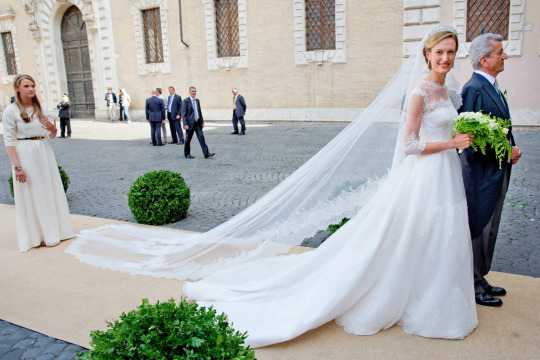
Listen, I really love this gown. Are the lace-lined seams on the bodice and sleeves kind of weird? Yeah, but I think it works on Lili and she looks fabulous. I actually really like the point d’esprit (the little dots on the lace) and I think it lightens it up for her really well. The veil is beautiful, and I love, love, love that tiara. We won’t talk about Lili’s husband, but she looks fabulous, and I love this gown fight me.
8. Crown Princess Mette-Marit of Norway

Something of an oldie, but still a goodie - we just won’t talk about how young and nerdy Haakon looks here. This is only number 8 on this list but that shouldn’t fool you because I love this gown. It’s so simple but done so well, and makes it look like she’s floating on a cloud or something. I love the veil and I’m iffy on the tiara, but this is so Mette-Marit and I love it.
7. Princess Claire of Luxembourg
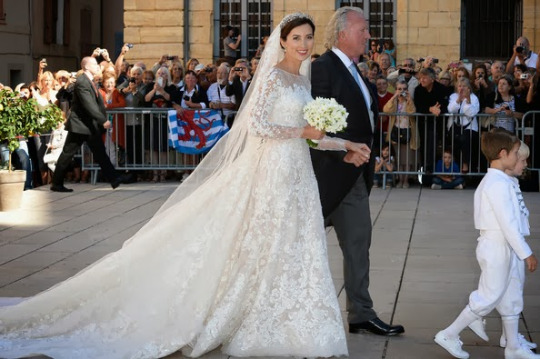
An Elie Saab and Luxembourg gown so far down on the list? I know, I’m surprised myself. But seriously, she looks beautiful and the gown is fab - Elie Saab is incredible and the lace and embroidery on this one is so intricate. I also love that you can actually see the lace on the skirt - so often it gets lost if you’re not looking at close-up shots, but not here. Beautiful bride, beautiful tiara, beautiful gown.
6. Duchess of Sussex
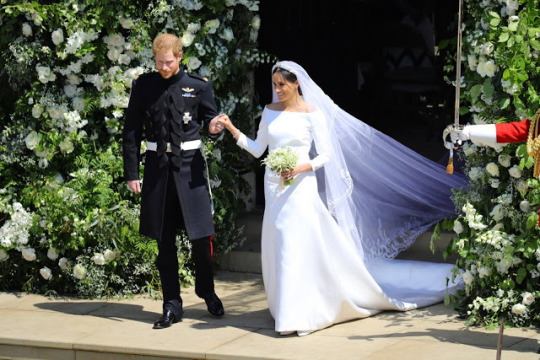
Tailoring and fit issues aside, this is a beautiful gown, and I would wear one just like this in a heartbeat. The sort of off-the-shoulder neckline is really flattering on Meghan, and as always I give three cheers for a gown with non-lace, non-sheer long sleeves (and also a waist!). The veil is beautiful, and I love anyone who goes digging around in the family jewel vault for a tiara we haven’t seen in years. I love a good lace gown, but this was perfect for Meghan and looks fabulous.
5. Princess Viktoria of Bourbon-Parma
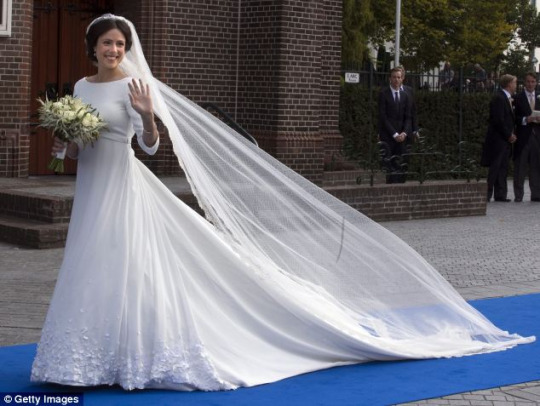
Moving into the royal-ish part of this list, Viktoria is married to Prince Jaime of Bourbon-Parma, one of Willem-Alexander’s cousins - Jaime’s mother is Princess Irene, younger sister of Princess Beatrix. Family trees aside, this is a beautiful gown, although I feel like this might be a little but of an unpopular opinion. It’s very simple, except for the (admittedly odd) textured embroidery along the hem - I think they’re flowers? But like Meghan’s gown, I’d wear this one in a heartbeat, and Viktoria looked great - special shout out to the Ears of Wheat tiara and her beautiful veil.
4. Princess Marie-Gabrielle of Nassau
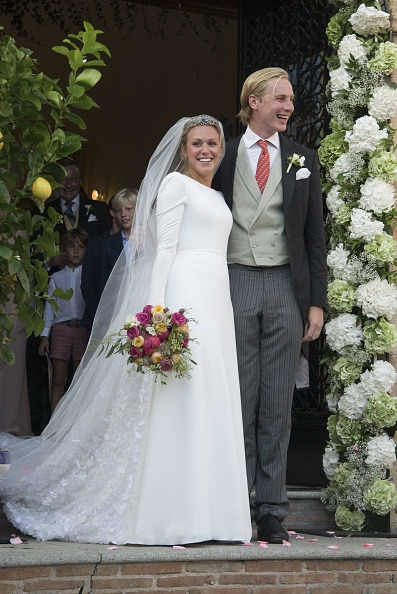
Another gown with another relatively simple, long-sleeved front - are you sensing a theme here? Seriously, y’all are sleeping on Marie-Gabrielle. The back of the skirt is embroidered with flowers and sparklies and I love it. What I also love? That sapphire tiara - we don’t see nearly enough colorful bridal tiaras for my taste. This is another royal-ish entry - Marie-Gabrielle is the daughter of Prince Jean of Luxembourg, younger brother of Grand Duke Henri.
3. Beatrice Borromeo

Not quite royal, and also not traditional white. Beatrice wore like 5 dresses over the course of her wedding celebrations and looked fabulous in all of them (I’m a huge sucker for her reception gown after the religious ceremony) but for this list I’m absolutely in love with this Valentino gown for the civil ceremony, flower crown and all. It’s pretty and boho and a really nice color, and I’d love it if we could make gowns a thing for more civil royal weddings.
2. Princess Carolina of Bourbon-Parma
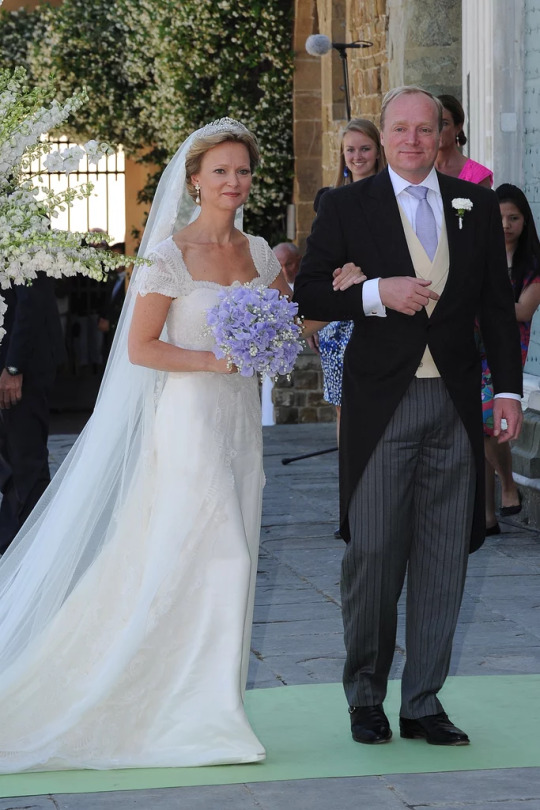
One more royal-ish gown - Princess Carolina of Bourbon-Parma, another one of Willem-Alexander’s cousins (Princess Irene’s daughter). This is just so pretty - it’s light and flowy and apparently includes heirloom family lace that Irene wore at her own wedding, which is always a nice touch. Another showing for the Ears of Wheat tiara and a beautiful lace veil - I really love this one.
1. Hereditary Grand Duchess Stephanie of Luxembourg
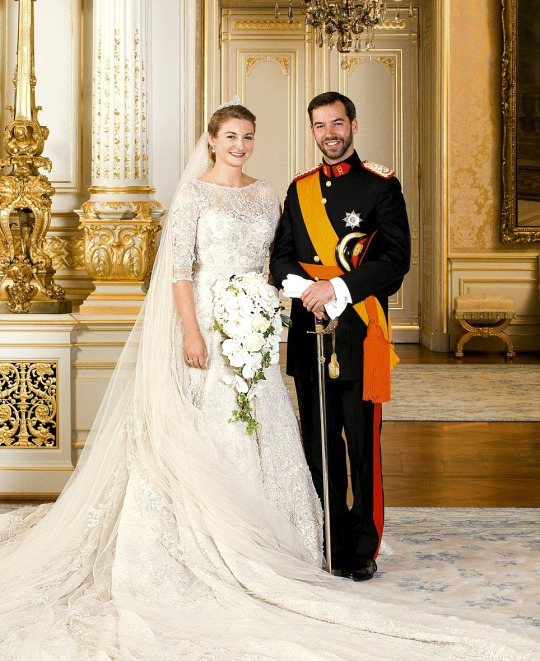
To the surprise of absolutely no one, Stephanie’s Elie Saab gown is coming in first here. Come one now, you didn’t really think I’d pick anything else ;) I don’t even know what to say about this one that I haven’t gushed about before, but - the lace! the embroidery! the train! the veil! the Lannoy tiara! her hair! This is a royal wedding gown if ever there was one, and I love that about it.
#did i do this whole list just as an excuse to gush about steph's gown?#the world may never know#morgan talks
15 notes
·
View notes
Photo

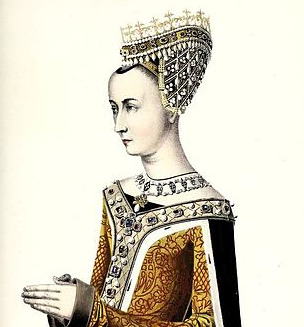



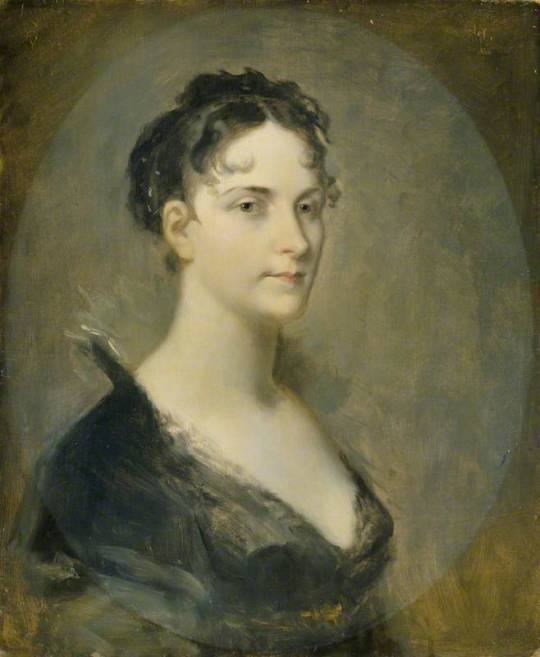




Royal Birthdays for today, June 23rd:
Ptolemy XV Philopator Philometor Caesar, Pharaoh of Egypt, 47 B.C.
Margaret of Denmark, Queen of Scotland, 1456
Charles II, Duke of Savoy, 1489
Shah Shuja, Mughal Prince, 1616
Marie Leszczyńska, Queen of France, 1703
Joséphine de Beauharnais, Empress of the French, 1763
Edward VIII, King of the United Kingdom, 1894
Tribhuhvan Bir Bikram Shah, King of Nepal, 1906
Maria Carolina of Bourbon-Parma, Marchioness of Sala, 1974
Maria-Carolina of Bourbon-Two Sicilies, Duchess of Palermo, 2003
#caesarion#margaret of denmark#marie leszczynska#Shah Shuja#josephine de beauharnais#edward viii#Tribhuhvan Bir Bikram Shah#Maria Carolina of Bourbon-Two Sicilies#Maria Carolina of Bourbon-Parma#long live the queue#royal birthdays#charles ii
19 notes
·
View notes
Photo








Granddaughters of King Henry IX and Queen Isabella
Daughters of Charles, Prince of Wales
Charlotte, Queen Elizabeth III of the United Kingdom
Mary, Princess of the United Kingdom, Princess of Ligne, Princess of Mountbatten-Windsor
Daughters of Albert, Tsar Alexander IV of Russia
Alexandra, Grand Duchess of Russia, Crown Princess of Norway, Princess Imperial of Russia, Princess of the United Kingdom, Princess of Mountbatten-Windsor
Nadia, Grand Duchess of Russia, Princess of the United Kingdom, Princess of Orleans, Princess of Mountbatten-Windsor
Irina, Grand Duchess of Russia, Crown Princess of Sweden, Princess of the United Kingdom, Princess of Mountbatten-Windsor
Xenia, Grand Duchess of Russia, Crown Princess of Denmark, Princess of the United Kingdom, Princess of Mountbatten-Windsor, Countess of Monpezat
Daughters of Mary-Astrid, Princess Royal
Ingeborg, Princess of Sweden, Duchess of Västmanland, Princess Bernadotte
Dagmar, Princess of Sweden, Duchess of Småland, Princess of Romania
Daughters of Princess Elisabeth
Marie-Valerie, Princess of Liechtenstein, Countess de Limburg Stirum
Marie-Beatrix, Princess of Liechtenstein, Princess of Nassau
Daughter of Princess Alice
Margaretha, Princess of Nassau, Princess of Bourbon-Parma, Princess of Liege
Yolande, Princess of Nassau, Princess of Bourbon-Parma, Countess de Lannoy
Daughters of Robert, Duke of Sussex
Maria-Christina, Princess of Sussex, Princess of the United Kingdom, Princess of Mountbatten Windsor, Princess of Monaco
Maria-Carolina, Princess of Sussex, Princess of the United Kingdom, Princess of Belgium, Princess of Mountbatten Windsor
Maria-Antonia, Archduchess of Austria, Princess of Sussex, Princess of the United Kingdom, Princess of Mountbatten Windsor
Maria-Anna, Hereditary Grand Duchess of Luxembourg, Princess of Sussex, Princess of the United Kingdom, Princess of Mountbatten Windsor
Daughters of Nicholas, Duke of Clarence
Joanna, Princess of Clarence, Princess of Mountbatten-Windsor, Countess de Limburg Stirum
Gabriella, Princess of Clarence, Princess of Belgium, Princess of Mountbatten-Windsor
Sophia, The Princess of Monaco, Princess of Clarence, Princess of Mountbatten-Windsor
Daughter of Joseph, Duke of Suffolk
Stephanie, Princess of Suffolk, Princess of Nassau, Princess of Bourbon-Parma
Daughters of Michael, Duke of Kendal
Anastasia, Princess of Kendal, Princess of Denmark, Countess of Monpezat
Victoria, Princess of Kendal, Princess of Romnia
Isabella, The Queen of Spain
Augusta, Princess of Kendal, Countess of Monpezat
7 notes
·
View notes
Photo
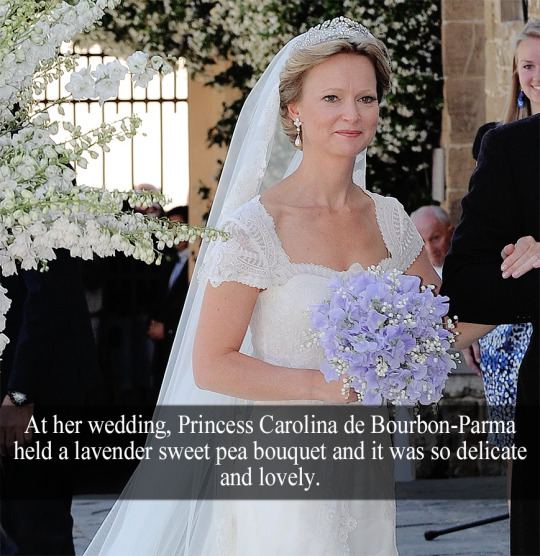
“At her wedding, Princess Carolina de Bourbon-Parma held a lavender sweet pea bouquet that was so delicate and lovely. 🥰” - Submitted by Anonymous
47 notes
·
View notes
Note
I adore Princess Carolina of Bourbon Parma's wedding bouquet, lavender colored sweet peas, that shade is lovely :-)
OMG SAME!! It’s a nice pop of color but not super in your face.. it’s just so sweet!!!
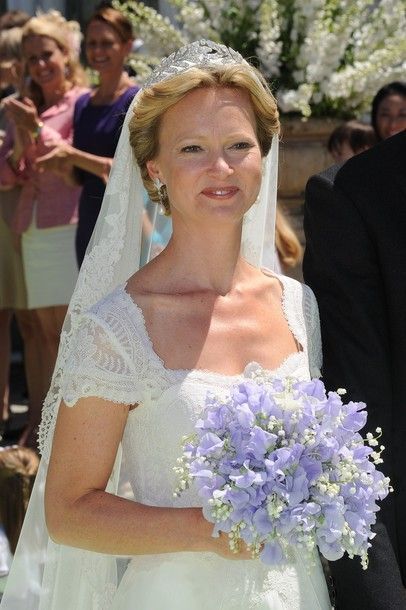
7 notes
·
View notes
Photo
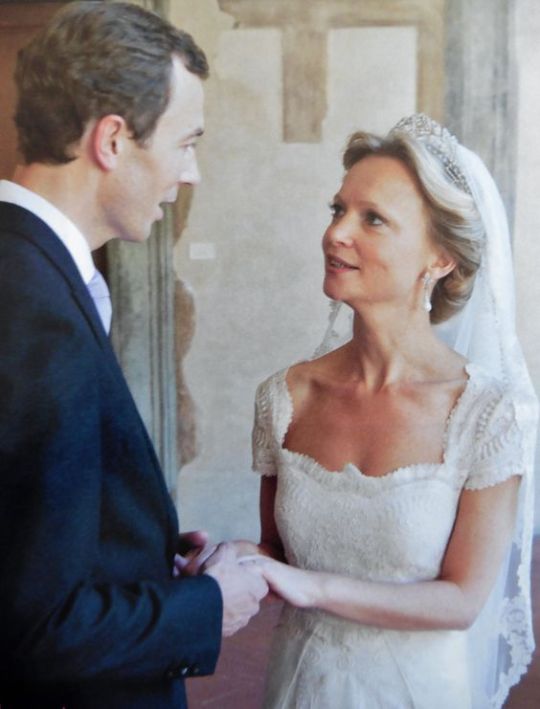
✵ June 16, 2012 ✵
Princess Maria Carolina of Bourbon-Parma, Marchioness of Sala & Albert Brenninkmeijer
#Princess Maria Carolina#princess carolina#Carolina of Bourbon-Parma#marchioness of sala#albert brenninkmeijer#lace wedding dress#royal wedding dress#royal wedding veil#Laurel Wreath Tiara#Diamond Tiara#Diamond Jewelry#Bourbon-Parma#House of Bourbon-Parma#Italy#italian aristocracy#italian nobility#italian aristocrat#Dutch royal family#Dutch Royals#Dutch Royal Wedding#netherlands#Netherlands Royal Family#netherlands royal wedding#Royal Wedding
25 notes
·
View notes